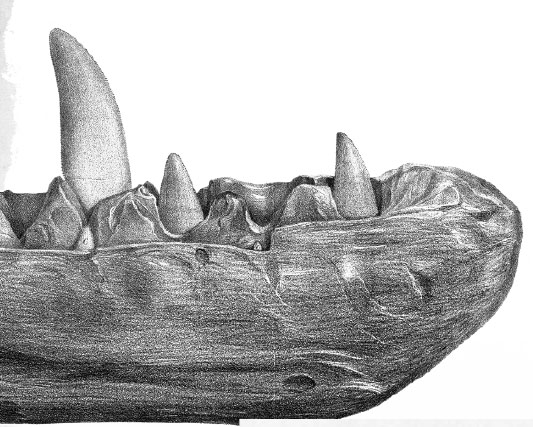
THIS MEGALOSAURUS JAW FRAGMENT WAS THE FIRST DINOSAUR FOSSIL EVER DESCRIBED BY SCIENCE.
Rembrandt Peale was mistaken about his carnivorous mastodon with the upside down tusks, but he was no fool. By 1803 when he was writing about the mastodon and touring England with the skeleton, Cuvier had already published powerful evidence that extinction was a real part of nature. Rembrandt was impressed by Cuvier’s description of “no less than twenty-three different species of animals…whose existence in former ages is attested by their fossil remains,” including the Siberian mammoth, the American mastodon, giant ground sloths, huge deer, and so on. None of those fossil species were known to still be alive.
Even by themselves, mammoth and mastodon fossils would suggest that a “time has been when numbers of animals…existed, had their day, and have perished.” If there were still mammoths around, people would probably know! But the combination of large numbers of large animals made Cuvier’s case completely convincing. As Rembrandt explained, “it is not possible that so many, and such large animals, should live unknown, although one or two species might.” The reality of extinction was undeniable, he said bluntly: “We are forced to submit to concurring facts as the voice of God—the bones exist, the animals do not.”